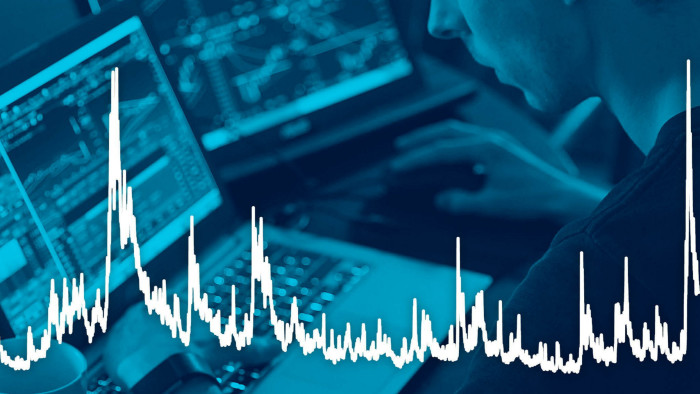The volatility virus strikes again

Roula Khalaf, Editor of the FT, selects her favourite stories in this weekly newsletter.
The writer is a fund manager at M&G and author of ‘Supercharge Me: Net Zero Faster’
Whatever one’s view of the UK government’s so called “mini-Budget”, the bond market crash last week exaggerated its significance. It is true that the Bank of England may need to raise interest rates more than it would have otherwise, although even this is highly uncertain.
But what is clear is that the current government will be fortunate to survive another two years, not 30. So how can one explain market expectations for interest rates over 30 years rising from 2.5 per cent in August to in excess of 5 per cent last week?
The proximate cause of this latest panic appears to be collateral calls on UK pension funds to cover losses on hedges of their liabilities. But rapid declines in market prices, or “flash crashes”, are occurring with increasing frequency. Each post mortem reveals a different strategy, or market participant, being forced to sell. But there is a deeper cause.
The biggest structural change in investor behaviour in the last 30 years is the near universal adoption of volatility as a measure of risk. Volatility is simply the standard deviation of the price of a security or market, or how much the price moves away from its mean in a given time period.
It is rarely appreciated that volatility is relevant to a universe of investors far beyond those funds that explicitly seek to exploit volatility for returns. It is a relevant factor to almost all the major pools of capital in financial markets. Virtually all risk-management tools, used globally across all the major financial institutions, measure portfolio risk based on volatility.
Even financial advisers categorise individuals in the retail market according to “risk categories”. Low, medium and high risk are typically defined by ranges of expected portfolio volatility.
Why does any of this matter? Crashes are caused by correlated investor behaviour — the herd. If investors act in unison trying to sell an asset, the price has to move a great deal for the market to clear. If vast swaths of financial capital are shrinking portfolios in response to rising volatility, rising volatility will beget higher volatility, and dramatic swings in price. This process is now embedded in financial market behaviour.
Such dynamics have been compounded in major asset classes by a fundamental change in the correlation between bonds and equities. To understand the volatility of a portfolio of assets, you also need to make assumptions about the correlation of the major components.
Consistently during the last 30 years, government bonds have been negatively correlated with equity markets during phases of steep and persistent stock market declines. Owning government bonds has acted like owning an insurance policy against the stock market. During steep declines in equity markets, bond prices have typically risen, damping the volatility of overall portfolios.
This year that correlation has changed. A sustained inflation problem and a huge shock to interest rate expectations has caused global yield curves to rise rapidly, and bond prices to fall. Such bond yield rises have meant future company profits are discounted at a higher rate just as the probability of recession is rising, causing double-digit declines in stock markets. Far from acting like diversifying insurance policies, adding bonds to an equity portfolio has acted like adding leverage.
If everyone now targets volatility, there is a persistent source of herd behaviour, so price crashes become a permanent feature of financial markets. The roots of this intellectual virus are strong: it is deeply embedded in the framework of modern financial economics, it is facilitated by technology, and it amplifies behavioural biases and investor emotion.
The great economist Frank Knight did untold damage when for convenience rather than accuracy he defined “risk” as a measurable probability and “uncertainty” as unmeasurable. Most risk, properly understood, is not measurable.
Finance theory, with insufficient reflection, took Knight’s arbitrary line as gospel, and concluded that the only measure required is market price. Feeding technology with almost limitless time series of data, it is little surprise that the financial system is transformed. The deepest irony is that the quantitative “science” of risk management in fact amplifies the simplest of human emotional responses — when prices start falling, most people panic.
This backdrop suggests that the timing of this cavalier interim Budget explains much of its impact. Attempts to re-establish fiscal credibility may help at the margins, but the real forces at work in this market lie elsewhere
Comments